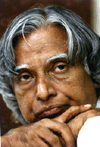He was born to a poor niyogi brahmin family in Bhimavaram of the Old Madras Presidency, now in West Godavary District, Andhra Pradesh. He passed through a traumatic period in his schooling at Rajahmundry (due to the premature death of close relations by disease) and eventually matriculated in his third attempt from the Hindu High School, Madras. He passed the Intermediate Examination from the Presidency College and entered the Madras Medical College where his education was supported by friends and Kasturi Suryanarayana Murthy, whose daughter he later married. Following Gandhi's call to boycott British goods he started wearing khadi surgical dress; this incurred the displeasure of M. C. Bradfield, his surgery professor. Consequently, though he did well in his written papers, he was awarded the lesser LMS certificate and not a full MBBS degree.
Subbarao tried to enter the Madras Medical Service without success. He then took up a job as Lecturer in Anatomy at Dr. Lakshmipathi's Ayurvedic College at Madras. He was fascinated by the healing powers of Ayurvedic medicines and began to engage in research to put Ayurveda on a modern footing.
A chance meeting with an American doctor, who was visiting on a Rockefeller Scholarship, changed his mind. The promise of support from Satyalinga Naicker Charities and Malladi Charities, Kakinada and financial assistance raised by his father-in-law, enabled Subbarao to proceed to the U.S. He arrived in Boston on October 26, 192
Subbarao tried to enter the Madras Medical Service without success. He then took up a job as Lecturer in Anatomy at Dr. Lakshmipathi's Ayurvedic College at Madras. He was fascinated by the healing powers of Ayurvedic medicines and began to engage in research to put Ayurveda on a modern footing.
A chance meeting with an American doctor, who was visiting on a Rockefeller Scholarship, changed his mind. The promise of support from Satyalinga Naicker Charities and Malladi Charities, Kakinada and financial assistance raised by his father-in-law, enabled Subbarao to proceed to the U.S. He arrived in Boston on October 26, 192











